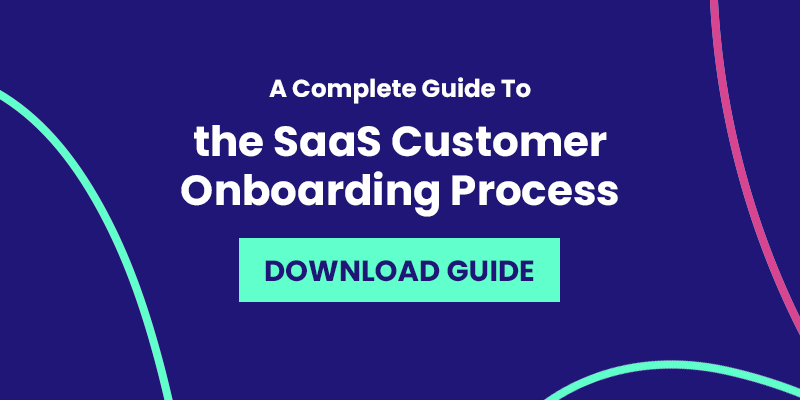Create Better Customer Relationships: Multichannel Marketing
Yes, in order for your business to prosper in the modern world, your marketing and overall communications need to be personalised, relevant, and valuable to your customers and prospects. The internet can be a wonderful place but, if you’re a brand or a marketer, it’s an area that, unfortunately, you cannot totally control. Of course, when it comes to the likes of social media, your website, and your messages, you have the power to design, create, and promote anything that your heart desires with the ideal outcome in mind. But do you have the power to directly govern how your customers and prospects think, speak and feel about your brand? No, you do not.
That’s the difference between paid & owned media and earned media; every business can manage their paid media, this means PPC (pay-per-click), print, direct mail, etc., as well as their owned media like their website, blog and social accounts. But earned media is the bit that you can’t control; the customer reviews, social media engagements, and word of mouth. And these have the potential to be the most powerful types of marketing out there.
Luckily, you do have the ability to create better relationships with your customers and therefore greatly influence the way that they think, speak, and feel about your brand. You can achieve this influence through creative multichannel marketing.
Source: Digital Doughnut
What is multichannel marketing?
As the name suggests, multichannel marketing is the process wherein businesses promote products, services or content via multiple channels, and effectively utilise the unique strengths and benefits of each channel. By channels, we mean the vehicles that marketers use to communicate with audiences and prospects. These consist of mediums such as websites, email, social media, SMS, push notifications, in-app messages, paid advertising, direct mail, and so on.
Marketers, of course, don’t have to utilise each and every channel available. That could get confusing and rather expensive. But consumers today are fluid and don’t just reside in one place, so it’s in the best interests of businesses to communicate via multiple channels, which means organising and running numerous campaigns. With this in mind, it’s clear to see why it’s so important to understand how your target audience wishes to communicate, and therefore which channels are the most appropriate for your business and which will yield the best results in return.
Source: Pew Research Center
These 3 key points will help you to create a successful multichannel marketing strategy:
1. Target the relevant audience
One of the main challenges marketers face is understanding the customer. That means who you have in your current database as well as your prospects. In order to target the relevant audience, you need to know who you’re looking for. The best way to start is by utilising market segmentation.
Market segmentation is the process of dividing an audience into subgroups based on commonalities and shared characteristics. These characteristics are established by looking at information in terms of the 4 core pillars of segmentation:
- Demographic Segmentation (age, gender, income, education level, marital status, etc.)
- Geographic Segmentation (location, 'urbanicity', climate, culture and language)
- Psychographic Segmentation (values, interests, lifestyles, motivations, etc.)
- Behavioural Segmentation (actions made in-store, on your website, in-app, etc.)
Exploring customer information and making use of clever market segmentation ensures that you evolve with your ever-changing customers. The buying behaviours, needs, wants, motivations, and information of your customers evolves at a rapid rate, and your multichannel strategy needs to follow suit.
If you design the right segmentation approach, you can act on insights gained from customer actions and reactions, ensuring that your communications are relevant. Market segmentation is multifaceted; not only does it ensure that you’re up to date with your customers, but it also allows you to keep track of your competitors and what’s trending in the market, too. Whether it’s social, political, environmental, etc., regularly conducting market segmentation research ensures that you don’t miss a trick by targeting the wrong person, with the wrong message, at the wrong time or via the wrong channel.
So you know what market segmentation is and the importance it holds to your audience targeting. But the objective of targeting the relevant audience contains another element that’s equally important; the buyer persona.
Buyer personas are semi-fictional representations of your ideal customer or target audience. The buyer persona is not a real individual, but a visualisation that’s made up of descriptions as well as your market research and (often) data that you hold on existing customers. In order to create an accurate and effective buyer persona, you need to include aspects such as:
- Demographics
- Behaviour patterns
- Motivations
- Goals
- Potential pain points
- Buying patterns
These aspects are drawn from your data and research; from the 4 core pillars of market segmentation. You should then outline factors such as the channels that your ideal customer prefers to use and the marketing content or advertisements they will engage with.
You may be the best marketer in the world, with the cleanest, most accurate data, but at the end of the day, your customers are human beings, whose minds, moods and motivations change. So A/B test the validity of your personas to ensure that you’re on the right track or if your strategy needs a little tweaking.
By utilising market segmentation and creating valuable buyer personas, you will have a greater understanding of your ideal target audience: who they are; what they like; what motivates them; where they experience pain points; which channels they use; which devices and platforms they prefer, and so on. Holding this knowledge is critical for effective content creation, as well as product development, sales messaging, post-purchase care, and any element of your strategy that helps you to acquire and retain customers.
2. Personalise content
Implementing a one-size-fits-all approach in your multichannel marketing just won’t do. Your customers require (and deserve) much more. You have the means to personalise your content - you are able to conduct accurate market segmentation research and design personas, so put this good data to use by allowing it to inform the content you create.
Knowing the problems of your audience is essential to creating tailored content and messaging. If you don’t address their issues and needs then they will look elsewhere. Your brand has to not only offer the solution, but it has to be offered in the right way, in the right place, at the right time and (of course) to the right person. Here’s how you can do just that:
- In the right way
Your message needs to reflect your brand personality. Do you use humour in your push notifications? Or is the tone that your brand portrays on your website professional and sincere, and therefore your push notifications must reflect that, too? Take into consideration aspects such as voice, message length, and personalised elements like including someone’s name within a message followed by content that you know they will find interesting.
Personalising content in the right way doesn’t just refer to your own brand personality. If you’re operating within the B2B marketplace, you also have to consider the external aspects and the norms of other businesses, i.e. if you’re contacting a super-sophisticated company, they might not appreciate your welcome email containing a low-brow joke, for example.
Source: Digital Doughnut
Similarly, if you’re posting content on LinkedIn, it’s a professional social channel, so your content will likely go down better if it reflects the atmosphere associated with LinkedIn. You have to take into account the format of your content, too. Take Instagram, for example; it’s a visual platform. If you’re not posting aesthetically pleasing, intriguing or wonderful pictures on your channel it’s unlikely that you will see much success there.
- In the right place
Where does your audience reside? Are they most responsive to your social media profile, to your digital ads, to your in-app messages, or a mixture of avenues? In order to utilise your time, effort and budget effectively, you need to know the channels that your audience prefers to communicate on. Your segmentation data will clarify the channels and devices that will offer you the most opportunity for engagement.
- At the right time
Before you send any old email or message to a customer, you need to know where they are in the buyer’s journey. If you send an awareness email to someone who’s at the decision stage, you will not captivate their interest. Similarly, if you send a retention message to someone who’s only just become aware of your brand, it shows a lack of care and insight on the part of your business.
Analytics from your market segmentation data will also inform you of when your audience is most active. This will help to boost your engagement rates and ensure that you’re seen by those that matter most. When do your social media posts see the most interaction, Thursday at 5 pm? Monday morning? Saturday afternoon? If you communicate with your target audience at the right time you have optimised your opportunities to connect with them. Send the wrong message at the wrong time and your message will be lost in the aether. Or, even worse, you could end up annoying your customers and prospects to the point where you lose them altogether.
3. Analyse data
Whether it’s via your website, your app, your social media channel, emails, push notifications, and more, data is abundant. And most channels now allow you to collect and analyse this data with ease. This is super important as research shows that 59% of consumers stop engaging with brands as a result of poorly targeted communications. Analysing your data helps you to build better connections with your audience (and helps you attract prospective customers) by delivering insight into their actions, pain points, and what it is that motivates them.
Source: Lead Forensics
Multichannel marketing campaigns provide a full view of your customers’ actions and interactions; you’re able to see their favoured devices, the channels that they frequent, and the messages that they best respond to. All of this key information means that you can deliver the most relevant messages to your customers.
People change. That’s no secret. But, luckily, as people change, so does their data. By regularly revising your data and analysing your content and messages, you can be sure that you’re still delivering a streamlined and personalised experience. When running multichannel marketing campaigns, analysing the impact of your engagements is vital for the overall success of your campaigns and, subsequently, your business outcomes.
Taking into account all of these key elements will help you to streamline your targeting which will guide your messaging, product development, the channels you choose, and more.
How can multichannel marketing create better relationships with your customers?
Enhanced targeting; having multiple channels allows you to better target specific personas - giving you a clearer understanding of the demographics and behaviours that are relevant to your brand. Different personas will react differently, and be more/less receptive depending on the device, channel or message with which you contact them. But when you take the time to learn about your customers and to accurately target them, you can then engineer communications that are super-personalised, relevant and valuable, therefore optimising customer experience (CX).
Source: Bridge
Multichannel marketing also improves audiences’ perceptions of your brand. How customers perceive your brand is fundamental to its long term success. A certain amount of bad reviews and you’ll be overtaken by competitors in no time. By creating consistency across multiple channels your customers and prospects will see you as legitimate and trustworthy. Offering a variety of touchpoints and opportunities for engagement is highly valuable. Especially if the engagement points are personalised.
As well as benefiting your customers, multichannel marketing also has the great advantage of being cost-effective for your business. With accurate targeting, personalisation and data analysis of your multichannel marketing, you can design the best strategy that will deliver the lowest cost-per-acquisition (CPA) which will allow you to achieve a quicker and optimised return on investment (ROI).
How Hurree can help
Research shows that 46% of businesses claim the complexity of managing diverse channels requires skills that are not available or easy to acquire. We would agree. And multichannel marketing can get a little confusing but, luckily, technology is on our side.
Hurree's software integrates with hundreds of tools to reduce the time and energy wasted switching between multiple tabs when creating reports. Now you can unify your data in one place, building marketing and sales dashboards that provide a complete picture and can be shared easily amongst your different departments.
No more separate, fragmented and unorganised data that exists in tools or spreadsheets that can’t be accessed or understood by all departments.
Conclusion
The way that brands communicate with customers and prospects has evolved so much even in the past few years thanks to great advancements in digital marketing technology. Innovative products and strategies now pave the way for customer-centric, integrated and seamless approaches to promotion and communication that allow for highly personalised and streamlined multichannel marketing.
But it’s not all about using the right tools; you can’t forget your creativity. Ensure that your imagination and personality enters your multichannel strategy. Let the tools do the automating so you have more free time for creative thinking.
After all, targeting your customers in the right way, in the right place, at the right time and with the perfect message optimises your chances of moving them down the funnel to the point of conversion and, ultimately, retention. Which is the goal of every great marketer.
Book a free demo today to see how Hurree can help you transform your company reporting and improve your sales & marketing output 💌 Don't hesitate to get in touch via contact@hurree.co if you have any inquiries - we’re happy to chat!
Share this
You May Also Like
These Related Stories

[Guide] Small Marketing Teams: Reclaim Your Time & Build Better Customer Relationships

5 Companies Who Nailed Their Brand Personality



